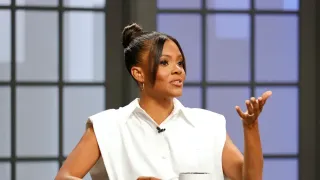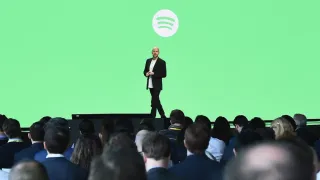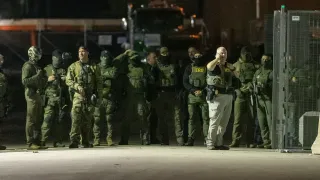
3 hours ago
What To Know Before Your First Protest: A Queer Guide to the No Kings Movement
READ TIME: 4 MIN.
On October 18, 2025, millions of people in the United States and around the world are expected to participate in the No Kings Protests, a nationwide demonstration against what organizers describe as the authoritarian policies of President Donald Trump and ongoing government corruption. Originally launched as a response to escalating executive power and militarization, the No Kings movement unites diverse communities in defense of democracy, transparency, and the principle that power belongs to the people—not to any individual or elite group .
The first major No Kings Day on June 14, 2025, saw over five million people participate across 2,100 cities and towns, with events also held in U.S. territories and more than 20 countries. Organizers have called for a renewed day of action on October 18, coinciding with ongoing concerns about voter suppression, militarized law enforcement, and threats to marginalized communities .
For LGBTQ+ people, these protests are a critical opportunity to raise our voices not only in defense of democracy but also in support of our rights, safety, and visibility. However, attending a protest—especially for the first time—presents unique challenges and considerations.
Preparing for Your First Protest: What Queer Folks Should Know
1. Know Your Rights
- Before attending, educate yourself on your rights as a protester. The right to assemble peacefully is protected under the First Amendment in the United States, but law enforcement response can vary depending on location and circumstances. Many civil rights organizations offer guides on what to do if you’re detained or confronted by police (see: American Civil Liberties Union, aclu.org/know-your-rights).
- LGBTQ+ individuals, especially transgender people and people of color, may face disproportionate risks of profiling or mistreatment. Having a basic understanding of your rights and local legal support resources is essential .
2. Safety First: Physical and Emotional
- Protests are often unpredictable. Consider attending with trusted friends or queer support groups, and share your plans with someone you trust. Many LGBTQ+ organizations organize “buddy systems” or affinity groups for mutual support.
- Pack essentials: water, snacks, identification, any medications, and protective gear (such as masks or goggles if tear gas is a risk). Wear comfortable clothing and sturdy shoes.
- For transgender people, consider bringing documentation that matches your identity if possible, as this can be important in case of detainment. If this isn’t possible, know your rights and local resources .
3. Digital Security and Privacy
- Protests can be targeted for surveillance, including facial recognition. Consider minimizing the use of location services on your devices and using encrypted messaging apps (such as Signal) to communicate. Cover tattoos or distinguishing features if you’re concerned about identification.
- If you plan to document the event, be mindful of other protesters’ privacy, especially if photographing or filming vulnerable individuals .
4. Visibility and Intersectionality
- The No Kings movement emphasizes unity across lines of identity and experience. LGBTQ+ people, particularly those who are Black, Indigenous, or people of color, have historically faced both exclusion and violence in large protest settings. Seek out or organize affinity spaces within the protest for queer and trans solidarity.
- Bring pride flags, signs, or other visible markers if you feel safe doing so. Your presence sends a powerful message: LGBTQ+ voices are essential to the fight for justice.
The October 18 protests have been called in response to what organizers describe as a continued erosion of democratic norms, including aggressive law enforcement tactics against peaceful demonstrators, attacks on voting rights, and policies that disproportionately harm marginalized groups. The No Kings movement’s messaging—"No Thrones. No Crowns. No Kings."—is a direct challenge to the idea of unchecked executive power .
For queer people, the stakes are especially high. Under the current administration, LGBTQ+ protections have faced repeated rollbacks, with particular threats to transgender rights in education, healthcare, and public life . Many protest organizers have explicitly called for LGBTQ+ inclusion and solidarity, recognizing that queer liberation is inseparable from the broader struggle for democracy and human rights.
Events are planned in major cities including Philadelphia, Los Angeles, Chicago, and New York, as well as in smaller towns and U.S. territories. International solidarity actions are expected in Canada, Mexico, Japan, and several European countries, reflecting the movement’s global reach .
LGBTQ+ Protest Tactics and Organizing
- Many queer organizations are holding pre-protest trainings focused on safety, legal rights, and de-escalation tactics. These trainings often include segments on supporting transgender people, responding to hate speech, and maintaining group cohesion under stress.
- Social media platforms (e.g., Instagram: @NoKingsMovement) have been used to coordinate logistics and share real-time updates. LGBTQ+ groups are leveraging these tools to ensure their members are informed, prepared, and connected.
- Some cities will feature dedicated LGBTQ+ marching blocs, affinity groups, and post-protest gatherings for reflection and mutual aid. This is particularly important for queer youth and those who may be new to activism .
What To Expect on October 18: Practical Advice
- Arrive early and check in with local LGBTQ+ organizations for coordinated meeting points.
- Stay aware of your surroundings, and be prepared for changes in protest routes or police presence.
- Know how to access legal and emotional support services. Many organizations provide hotlines or on-the-ground volunteers trained in first aid and crisis intervention.
- Respect the diversity of tactics and identities present. Some may choose to be highly visible; others may participate more discreetly due to safety concerns. All forms of participation matter.
After the Protest: Caring for Yourself and Your Community
- Take time to decompress, connect with others, and share your experiences. Protesting can be emotionally taxing, especially given the risks and intensity of current political tensions.
- LGBTQ+ community centers and organizations often host post-event gatherings or offer mental health resources.
- Document any incidents or abuses and report them to civil rights organizations. If you witness violence or discrimination, support victims and amplify their stories in safe, respectful ways .
The No Kings Protests on October 18 are more than a moment—they are part of a growing movement for justice, accountability, and liberation. LGBTQ+ people have always been at the forefront of struggles for democracy, from Stonewall to Black Lives Matter. By showing up in solidarity, we affirm that our lives, rights, and voices are central to shaping the future.
Whether you’re attending your first protest or your fiftieth, your presence is powerful. Prepare, connect, and stay safe. The world is watching, and together, we remind everyone: America has no kings, and the power belongs to the people .






